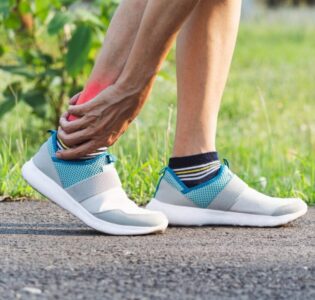 The goal of the procedure is to tighten the supportive ligaments in the ankle joint that have become damaged or loose for one reason or another. This helps to give athletes more confidence in their ankle and reduce their risk of subsequent sprains. Surgery and recovery typically goes as expected so long as the patient understands how to get the most out of their rehabilitation period. In today’s blog, we share five things to keep in mind during your recovery from ankle ligament reconstruction so that your rehab goes as planned.
The goal of the procedure is to tighten the supportive ligaments in the ankle joint that have become damaged or loose for one reason or another. This helps to give athletes more confidence in their ankle and reduce their risk of subsequent sprains. Surgery and recovery typically goes as expected so long as the patient understands how to get the most out of their rehabilitation period. In today’s blog, we share five things to keep in mind during your recovery from ankle ligament reconstruction so that your rehab goes as planned.
Recovering After Ankle Ligament Reconstruction
As always, remember that the following is just general advice, and your best bet is to sync up with the surgeon who is performing your operation for personalized treatment recommendations. With that said, don’t be surprised if they recommend some or all of the following advice as you work your way back after surgery.
1. Follow Your Restrictions – Although you will be stronger when all is said and done, your ligaments will be in a weakened and vulnerable state right after the procedure has been completed. You need to be very protective of your ankle during this initial recovery stage, so follow your doctor’s instructions in regards to activity and how you wear a protective boot or cast. Pushing yourself too hard shortly after surgery can lead to a setback or cause your ligaments to re-tear.
2. Don’t Miss PT – Once your ankle can begin tolerating some normal movements, you’ll be asked to participate in some physical therapy exercises. These strengthening exercises will prove essential in helping you get back to a pre-injury level of fitness and function, so don’t skip them. Attend all your in-person PT sessions, and be sure that you are following through on any home-based exercises that you are assigned by your physical therapist.
3. Slow And Steady – Know that recovery isn’t going to occur overnight, so buckle up and get ready for the long haul. For athletes who are hoping to return to competition, a full recovery can take anywhere from 6-12 months, and you shouldn’t return until your ligaments have fully healed. Coming in with the right expectations can help get you in the best mindset for recovery. It’s going to take some time, so make sure your goals are aligned in reality.
4. Consider Bracing – Many athletes find that wearing a brace or similar support can help as they work their way back to competition during training or practices. A brace can provide additional support while your ankle is still getting close to full health. It should not be used to help overcome weakness in the ankle, but it can provide additional support as you continue to improve the ankle and test it with more challenging movements during your rehabilitation period.
5. Lean On Your Care Team – Finally, because it will be a months-long recovery, know that you have resource in your care team if you ever have questions or concerns about your rehab program. You’re not alone during your recovery, and remember that you can lean on your surgeon, your care team or your physical therapist if you need help with any aspect of your recovery. We want to help you make the strongest recovery possible, and we’ll be with you every step of the way as you get back to full health. Let us help if you need additional assistance or are looking for answers.